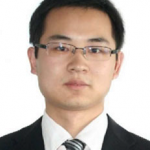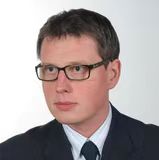Keynotes
Title: Underwater Image Enhancement based on Guided Multilayer Filtering
Huimin Lu received dual M.S. degrees in Electrical Engineering from Kyushu Institute of Technology and Yangzhou University in 2011. He earned his Ph.D. in Electrical Engineering from Kyushu Institute of Technology in 2014. From 2013 to 2016, he served as a JSPS Research Fellow (DC2, PD, and FPD) at Kyushu Institute of Technology. He is currently an Associate Professor at Kyushu Institute of Technology.
Abstract
In this talk, we introduce a novel approach that is able to enhance underwater images based on single image to overcome the drawbacks of the above methods. We propose a new guided trigonometric filter instead of the matting Laplacian to solve the alpha mattes more efficiently. In short summary, our technical contributions are threefold: first, the proposed guided trigonometric guided filter can perform as an edge-preserving smoothing operator like the popular bilateral filter behavior near the edges. Second, the novel guided filter has a fast and non-approximate constant-time algorithm, whose computational complexity is independent of the filtering kernel size. Third, the proposed αACE is effective in underwater image enhancement.

Huimin Lu
Kyushu Institute of Technology, Japan

Marcin Woźniak
Silesian University of Technology, Poland
Title: Advances in smart environments - from idea to system construction
Marcin Woźniak holds a M.Sc. (2007) and dual Ph.D./D.Sc. (2012, 2019) in computational intelligence from Polish institutions. Appointed Full Professor of Industrial Informatics & Telecommunications in 2022, he leads the Applied Mathematics Faculty at Silesian University of Technology. His roles include directing Poland’s “Diamond Grant” and “Best of the Best” talent programs, and managing international R&D projects (Polish, Italian, Lithuanian) funded by entities like NCBiR, with industry applications. A visiting researcher in Italy, Sweden, and Germany, he has published 200+ papers and focuses on neural networks, fuzzy logic systems, evolutionary computation, and federated learning. Recognized as a 2020–2023 “Top 2% Scientist” by Stanford, he won Polish Ministry awards for youth excellence (2017) and research (2021). He serves as Editorial Board Member/Editor for 12 journals (e.g., IEEE Access, Sensors) and chairs sessions at IEEE conferences (e.g., CEC, IJCNN). His expertise spans computational intelligence applications in IT and industrial systems.
His current research interests include biomedical engineering, biomedical informatics, ehealth, AAL, personalised health, biosignal analysis, medical imaging, and neurosciences. He has published more than 500 papers in peer-reviewed international journals, books and conference proceedings out of which over 160 as full peer review papers in indexed international journals. He has developed graduate and undergraduate courses in the areas of (bio)medical informatics, biomedical signal processing, personal health systems, physiology and biological systems simulation.
He has served as a Reviewer in CEC AIM, ICT and DGRT D-HEALTH technical reviews and as reviewer, associate editor and editorial board member in more than 20 international journals, and participated as Coordinator or Core Partner in over 45 national and EU and US funded competitive research projects attracting more than 16 MEUROs in funding. He has served as president of the EAMBES in 2008-2010. Dr. Maglaveras has been a member of the IEEE, AMIA, the Greek Technical Chamber, the New York Academy of Sciences, the CEN/TC251, Eta Kappa Nu and an EAMBES Fellow.
Abstract
Smart environments are becoming more and more investigated in a variety of applications. The concepts differ in construction due to input information type and expected output. We may use sensors to read the features of the environment, we may use the data or knowledge of expert. The construction of system for any approach must adapt to above assumptions. In the talk we will try to identify where and how to use different type of models to best fit expected results.


